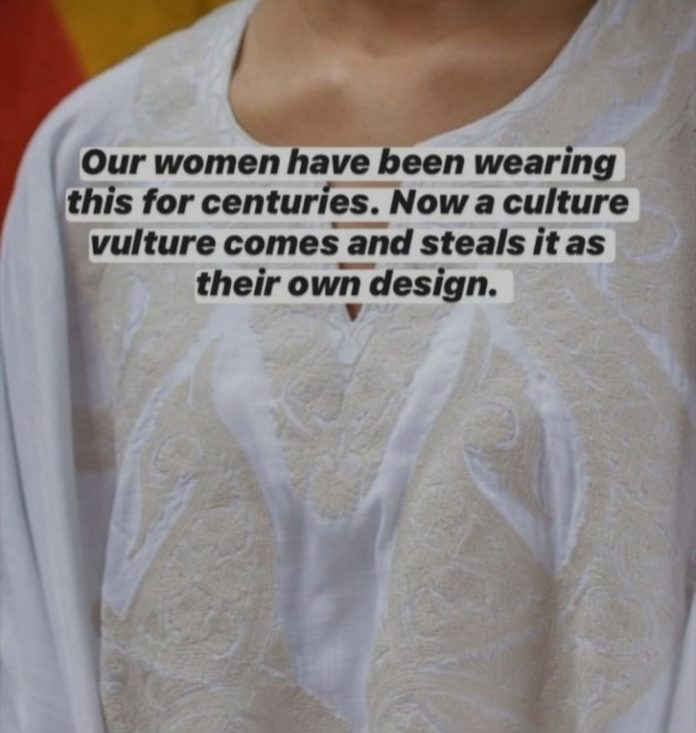History is witness to the ravages of conflict. Not only the political systems, economies, and societies, but the symbols of cultural heritage also suffer in a conflict. Often, cultural icons such as monuments, sculptures, artifacts, and traditional fashion symbols are deliberately targeted to erode the cultural fabric of societies. Culture provides a context with which people live and a sense of belonging with which they identify themselves. So much so that cultures become like personalities — unique and outstanding. Mostly, people have an emotional bond with their culture, and cultural symbols act as a narrative of collective memory that nurtures coherence in a community.

Fashion is considered an inseparable and basic element of cultural identity, but at the same time, it is always dynamic. The influences of different cultures on fashion can be traced back to the opening of the Silk Route. However, this has increased manifold, especially in the 21st century. In the light of globalization and the growth of the internet, fashion hybridization is unparalleled. The cross-cultural exchange of fashion between societies is taking place like never before. This has led to increased contestations around the concept of fashion and identity and the debate has taken on new perspectives.
However, certain styles closely reflect the cultures where they are born and, therefore, fashion is always the best channel to maintain, establish and express cultural identity. Scholars have always seen identity as sensitive and complicated, something that has to be sought and strived for, and when attained, is constantly under threat of diffusion or even dissolution.
To understand this, one needs to see the influences the British Raj had on Indian fashion. The British rulers, being technologically forward, were able to produce cheap machine-made versions of the fine fabrics, diluting not only the authenticity or traditional product but also rendering it non-Indian. It was eventually Mahatma Gandhi, who fought for the return to the original and recreation of the Indian textile after seeing the socio-political implications of such intrusion.
Colonial and imperial tactics of cultural appropriation are the most effective tools of identity loss and both are increasingly being reintroduced into modern conflicts. Cultural appropriation is widely seen as taking off not only the artifacts and cultural symbols of someone’s culture but taking of traditional intellectual property and traditional knowledge by borrowing or stealing. However, this appropriation, which is debated globally, is in reality a tragedy for a subordinate culture like Kashmir. In Kashmir, cultural appropriation has more to do with identity issues than proprietary issues. Throughout history, the cultural heritage of the indigenous people has been exploited by stealing, trading, or buying by people in power. The unauthorized use of fashion and other cultural elements of expression can be considered cultural appropriation.
More recently, Kashmir is witnessing increased attacks on heritage and fashion. A different but not isolated assault is seen in Kashmir’s traditional fashion.
Increasingly, Indian designers are stealing the traditional designs of Kashmir and capitalizing on them as their own. Even local industries in mainland India are manufacturing cheaper versions of traditional Kashmiri art and textiles, which in the long run will taint the brand name of Kashmiri art forever.

With historic experiences in mind, appropriation of fashion and culture can lead to identity dissolution and commercial and economic exploitation.
An international consensus is developing around the use of aboriginal art and indigenous designs by locals against their use in capitalist, profit-maximizing enterprises. Subordinate cultures are usually fetishized by aliens and monetized by capitalist giants.
One can see Kashmiri markets increasingly witnessing an influx of machine-made pherans and woolen Kurtis made in other states. The cheap replicas in the market are hitting the local economy and artisans. Not only this, some culture vultures are even feeding on Kashmir’s age-old crafts and calling them their designs. Capitalist hawks like Tjori and Inching India have launched winter collections featuring Kashmiri crafts for maximizing their profits. An Indian brand, Monte Carlo, has launched a coat collection featuring Kashmir’s ‘Kani’ work, without giving due credits. These profit-maximizing stunts have two major impacts: dilution of the authenticity and goodwill of the Kashmiri name and marginalizing the market for local artisans.

Throughout the world, especially in exploited societies, indigenous art is being fetishized and used in commercial enterprises. There are many instances where people and groups have gone to court to protect their designs. Kashmiri artisans have also obtained the geographic indication patent for six handicrafts that were being exploited by unscrupulous elements. The indigenous arts and crafts are sozni embroidery, Kani shawl, paper mache, khatamband, walnut wood carving, and a pashmina.

After the ban on shahtoosh, pashmina was predominantly used, but some dealers from outside the valley pumped cheap imitations of pashmina shawl into the market, not only causing heavy losses to the weavers but also ruining the goodwill of the centuries-old arts and handicrafts. This led to a campaign for Geographic Indicator (GI) patenting of the traditional pashmina shawl. After two years of struggle, it was patented and given a logo, ‘Tahafuz’.
The GI status is given to products made by traditional methods and indigenous to a community. However, it seems to have lost its value as the Khadi and Village Industries Commission has roped in four khadi Institutions from Varanasi and Ghazipur districts of Uttar Pradesh to process as well as weave Pashmina.
The assault on the Kashmiri culture must be stopped and the arts, crafts, traditions, and things people identify with be preserved. The loss of specific cultural knowledge or means of expression is akin to cultural death. While Kashmiris are caught between a rock and a hard place, they’re altogether ignoring a cultural onslaught, therefore, not realizing what they are losing.
















